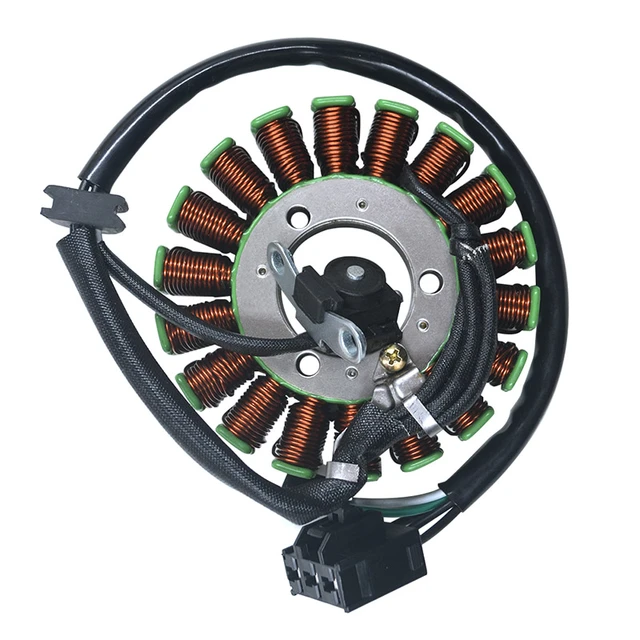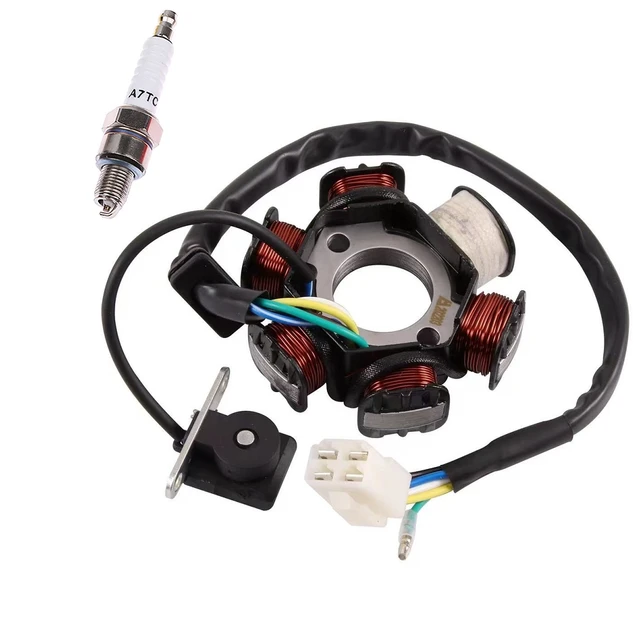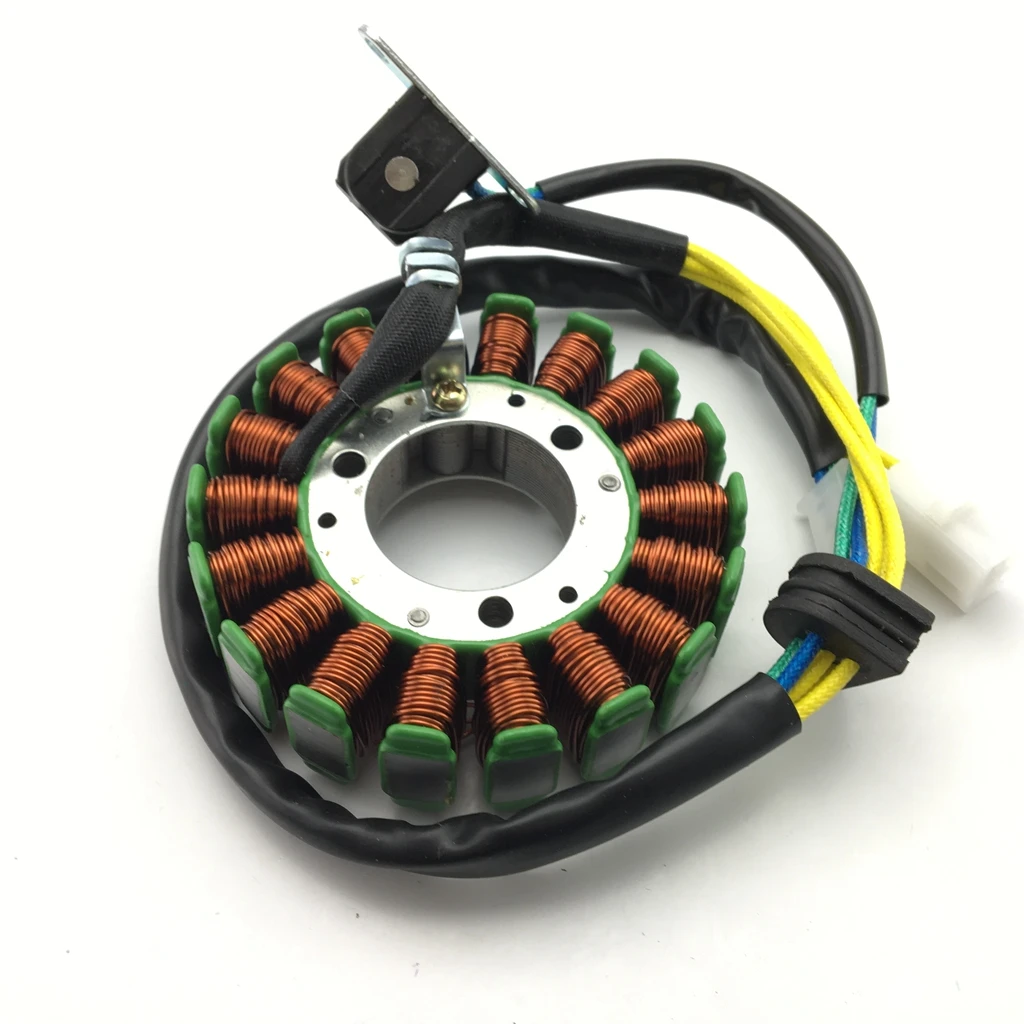Motorcycles are fascinating machines, combining engineering precision with thrilling performance. At the heart of these mechanical marvels lies a complex electrical system that powers everything from the headlights to the ignition. One key component in this system that often gets overlooked is the stator. But what exactly is a stator on a motorcycle? Understanding the role and function of this critical component can provide valuable insights into how your motorcycle operates and what to do if you encounter electrical issues.
The Basics of Motorcycle Electrical Systems
Understanding the Electrical Circuit
To grasp the importance of the stator, it’s crucial first to understand the basic electrical circuit of a motorcycle. The electrical system includes a battery, alternator, rectifier, and of course, the stator. Together, these components generate, convert, and store electrical energy required for various functions. An electrical circuit in a motorcycle powers essential systems such as ignition, lighting, and electronic controls. The stator plays an integral role by generating the alternating current (AC) necessary for these functions.
Role of the Battery
The battery in a motorcycle primarily serves as a storage unit for electrical energy. It supplies power during startup and when the engine is off. However, once the engine starts, the battery’s role diminishes as the stator and other components take over power generation. Understanding how the battery interacts with the stator can help identify potential issues and maintain optimal performance. Regular battery maintenance and checks can prevent unexpected electrical failures and ensure efficient operation.
Functions of a Stator in a Motorcycle
Power Generation
The primary function of the stator in a motorcycle is to generate electrical power. When the engine operates, the stator produces alternating current (AC). This AC power is crucial for running the motorcycle’s electrical systems and recharging the battery. The stator contains coils of wire through which a magnetic field rotates, inducing an electrical current. This process is fundamental to maintaining the motorcycle’s power supply and ensuring all systems function properly. Properly working stators ensure that your motorcycle runs efficiently, with all electrical components receiving the needed power.
Conversion to Direct Current
Most modern motorcycles use a combination of AC and direct current (DC) electrical systems. The stator generates AC power, but many of the motorcycle’s systems require DC power. A rectifier, often combined with a voltage regulator, converts AC to DC. This conversion ensures that the electrical requirements of different components are met, providing a stable and reliable power supply. Understanding the conversion process between AC and DC helps in diagnosing electrical issues and maintaining system integrity.
Battery Charging
One of the most critical functions of the stator is to recharge the motorcycle’s battery. As the stator generates AC power, this power is converted to DC to keep the battery charged. A well-functioning stator ensures that the battery stays adequately charged, preventing unexpected stalls or electrical failures. Regularly monitoring battery charge levels and stator output can help avoid disruptions and maintain efficient performance. Ensuring that the battery receives a steady charge extends its lifespan and enhances overall reliability.
Anatomy of a Stator
Coils and Windings
The stator consists of coils and windings made of copper wire. These coils are strategically arranged to create a magnetic field in the presence of a rotating magnet (rotor). This magnetic interaction induces an electrical current, which is harnessed to power the motorcycle’s electrical systems. The quality and condition of these coils and windings directly impact the stator’s efficiency. Ensuring that these components are in good condition is crucial for optimal performance.
Permanent Magnets
Alongside the stator, the rotor typically contains permanent magnets. As the rotor spins, its magnetic field interacts with the stator’s coils, generating electrical current. This interaction is fundamental to the stator’s power generation capabilities. Understanding the role of these magnets helps in diagnosing and troubleshooting power generation issues. Regular inspection of the rotor and magnets ensures consistent and reliable power output.
Mounting and Placement
The stator is usually mounted within the engine case, positioned around the rotor. This placement ensures a consistent and effective magnetic interaction, facilitating efficient power generation. Proper mounting and alignment are crucial for optimal performance. Ensuring correct positioning during installation and maintenance can prevent operational issues and enhance performance.
Common Stator Problems
Overheating
One of the most common issues with stators is overheating. Excessive heat can damage the coils and windings, reducing efficiency and potentially causing failure. Overheating can result from prolonged usage, poor ventilation, or an overloaded electrical system. Monitoring temperature and ensuring adequate cooling can prevent overheating and extend the stator’s lifespan.
Wear and Tear
Regular usage naturally leads to wear and tear on the stator. Over time, vibrations, heat, and mechanical stress can degrade the coils and other components. Regular maintenance and inspection help identify wear and tear early, allowing for timely repairs or replacements. Proactive maintenance ensures continuous and reliable performance, minimizing the risk of unexpected failures.
Electrical Shorts
Electrical shorts within the stator can cause significant issues. Damaged wires or insulation can lead to short circuits, disrupting power generation and potentially causing further damage. Identifying and repairing shorts promptly is crucial to maintaining electrical system integrity. Regular inspection of wiring and connections helps prevent shorts and ensures efficient operation.
Diagnosing Stator Issues
Symptoms of a Failing Stator
Recognizing the symptoms of a failing stator can prevent more severe problems later. Common signs include dimming lights, difficulty starting the motorcycle, or erratic behavior of electrical systems. These symptoms indicate that the stator may not be generating adequate power. Early diagnosis and intervention can prevent further damage and ensure continuous operation.
Testing the Stator
Using a multimeter to test the stator provides valuable insights into its condition. Measure the resistance between the stator’s coils and check for continuity. Inconsistent readings or lack of continuity indicate potential issues. Regular testing of the stator helps in early detection of problems, allowing for timely repairs. Understanding how to use a multimeter effectively ensures accurate diagnostics and informed decision-making.
Visual Inspection
A visual inspection of the stator can also help identify issues. Look for signs of physical damage, such as burnt coils or discolored windings. Inspect the connectors and wiring for any visible damage. Visual inspections complement other diagnostic methods, providing a comprehensive overview of the stator’s condition. Regular visual inspections enhance proactive maintenance and ensure optimal performance.
 Maintaining a Stator
Maintaining a Stator
Regular Cleaning
Keeping the stator clean is essential for its efficiency. Dust, dirt, and debris can accumulate on the coils and interfere with power generation. Regularly clean the stator using a soft brush and compressed air to remove any build-up. Cleanliness ensures optimal performance and extends the constancy of power output.
Ensuring Proper Cooling
Stators thrive in a well-ventilated environment. Ensuring adequate cooling involves maintaining clean air pathways and avoiding overloading the electrical system. Proper cooling prevents overheating, extending the stator’s lifespan and ensuring reliable performance. Implementing effective cooling strategies ensures that the stator operates within safe temperature ranges.
Scheduled Maintenance Checks
Incorporate the stator into your motorcycle’s regular maintenance schedule. Frequent checks and proactive maintenance prevent unexpected issues and ensures the stator operates efficiently. Adhering to scheduled maintenance checks enhances reliability and performance. A comprehensive maintenance routine helps identify and address potential problems early.
Replacing a Stator
Identifying the Right Replacement
When a stator fails, identifying the correct replacement is crucial. Refer to your motorcycle’s manual for specifications or consult with a professional. Using the correct replacement ensures compatibility and optimal performance. Researching and selecting high-quality stator replacements enhances reliability and longevity.
Installation Process
Replacing the stator requires some mechanical skill. Follow the manufacturer’s guidelines and take care during the installation process. Ensure all connections are secure and correctly aligned. Proper installation is crucial to the stator’s function and overall electrical system stability. Adhering to installation best practices ensures a successful replacement and efficient operation.
Post-Installation Testing
After replacing the stator, perform thorough testing to ensure everything is working correctly. Check for proper power generation, battery charging, and overall electrical system functionality. Post-installation testing validates the replacement and ensures system integrity. Comprehensive testing ensures that the replacement stator functions correctly and efficiently.
Conclusion: what is a stator on a motorcycle
Understanding what a stator is on a motorcycle and its crucial role in the electrical system can help you maintain and troubleshoot your bike more effectively. From power generation to battery charging, the stator is an essential component that ensures smooth and reliable operation. Regular maintenance, timely diagnosis of issues, and proper handling can extend the lifetime and effectiveness of this vital part, ensuring your motorcycle remains a reliable and thrilling ride.


